The Short Everest Base Camp Trek offers adventurers a unique opportunity to explore the majestic Himalayas in just 10 days. With a well-planned itinerary, trekkers will encounter vibrant Sherpa culture and stunning landscapes, all while experiencing the thrill of standing at 5,364 meters above sea level. Each day unfolds new challenges and breathtaking views, making it a memorable journey. But what do participants need to consider before embarking on this remarkable trek? Understanding the logistics and preparation can make a world of difference in the overall experience.
Good To Know
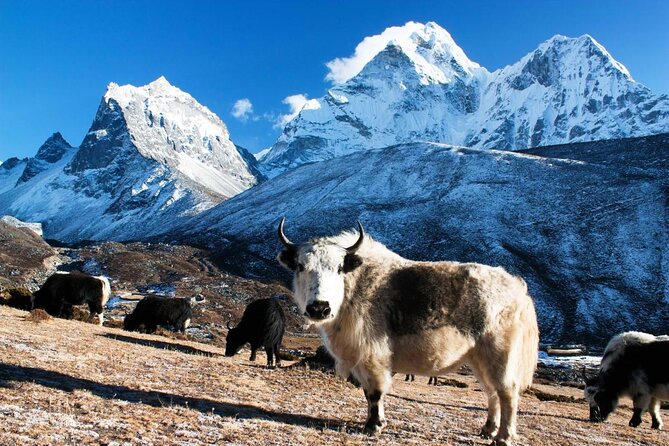
- Experience a stunning 10-day trek through the Himalayas, culminating at Everest Base Camp at 5,364 meters elevation.
- Accompanied by experienced guides, ensuring safety and a thorough understanding of the trekking route.
- Enjoy local teahouses and monasteries, providing a taste of Sherpa culture and warm hospitality.
- Witness breathtaking views of iconic peaks: Everest, Lhotse, and Makalu throughout the journey.
- Focus on gradual acclimatization and health, with essential safety tips for high-altitude trekking.
Trek Overview and Highlights

The Everest Base Camp Trek stands out as an unforgettable adventure for those looking to enjoy the breathtaking beauty of the Himalayas.
This 10-day trek offers a perfect blend of stunning landscapes, Sherpa culture, and spiritual experiences. Travelers will encounter majestic peaks like Everest, Lhotse, and Makalu, all while enjoying the warmth of local teahouses and monasteries along the route.
Designed for those with time or financial constraints, this shorter trek still delivers a rich experience without compromising on the iconic views and culture.
As trekkers ascend to the base camp at 5,364 meters, they’ll create memories that last a lifetime, making it a dream journey for adventure seekers everywhere.
You can also read our reviews of more tours and experiences in Kathmandu.
Detailed Itinerary
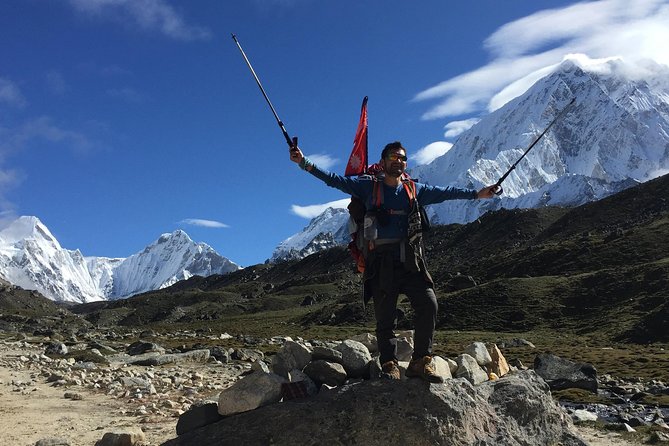
Starting the journey to Everest Base Camp is an exhilarating experience, and the detailed itinerary outlines the daily adventures that await.
On Day 1, trekkers fly to Lukla and then hike to Phakding.
Day 2 brings a challenging trek to Namche Bazaar, where acclimatization begins.
Day 3 involves trekking to Tengboche, with a visit to the monastery, while Day 4 leads to Dingboche.
On Day 5, trekkers make their way to Lobuche.
Day 6 is the highlight, reaching Everest Base Camp and returning to Gorakshep.
Day 7 features a sunrise hike to Kala Patthar.
The return journey on Days 8 and 9 sees trekkers retracing their steps to Lukla, wrapping up with a flight back to Kathmandu on Day 10.
Inclusions and Logistics
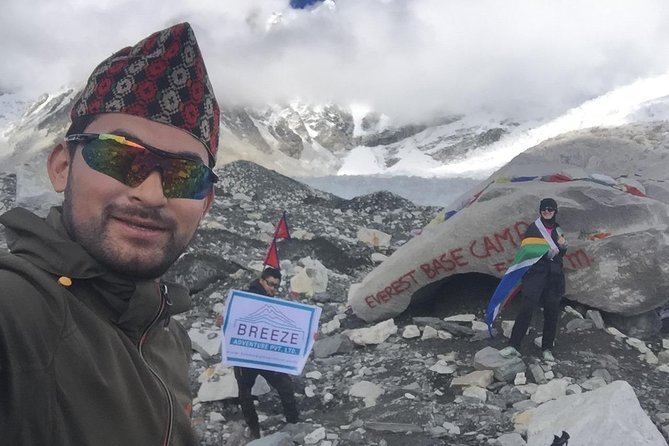
Planning a trek to Everest Base Camp involves thorough attention to inclusions and logistics to ensure a smooth journey.
Travelers can expect round-trip flights to and from Lukla, which serve as the gateway to their adventure. Each trekker will be accompanied by experienced, government-authorized guides who know the terrain and local culture intimately.
Essential equipment, including a sleeping bag and warm layers, is typically provided. However, it’s important to budget for additional costs such as international airfare, shower fees, and any personal expenses like drinks or snacks.
Understanding these logistics helps trekkers prepare adequately, ensuring they can focus on the breathtaking views and rich experiences awaiting them in the Himalayas.
Safety and Health Tips
Ensuring safety and health during the Everest Base Camp trek is crucial for a successful adventure. Trekking at high altitudes can pose risks, so it’s important to follow key tips. Staying hydrated and recognizing altitude sickness symptoms can make a big difference. Here’s a quick reference table to help:
| Tip | Description | Note |
|---|---|---|
| Stay Hydrated | Drink plenty of water. | Aim for 3-4 liters daily. |
| Acclimatize Gradually | Take time to adjust at higher altitudes. | Don’t rush your ascent. |
| Listen to Your Body | Recognize signs of fatigue or illness. | Rest if needed. |
| Descend if Necessary | Go down if altitude sickness occurs. | Prioritize your health. |
Cultural Experiences
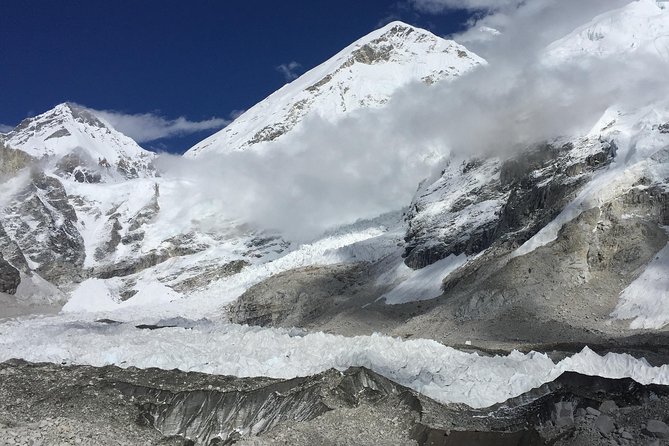
The Everest Base Camp trek offers a unique opportunity to take in the rich Sherpa culture and breathtaking natural beauty of the region.
Travelers often find themselves enchanted by the vibrant traditions and daily life of the Sherpa people. They can engage with the local community and experience:
- Colorful prayer flags fluttering around ancient monasteries.
- Heartwarming hospitality in cozy teahouses serving traditional meals.
- The rhythmic chanting of monks during spiritual ceremonies.
- Bustling markets in Namche Bazaar, showcasing handmade crafts and local produce.
These experiences not only enrich the trek but also foster a deeper appreciation for the culture that thrives in this rugged landscape.
For many, these cultural encounters become the highlight of their journey, creating lasting memories.
Scenic Views and Attractions
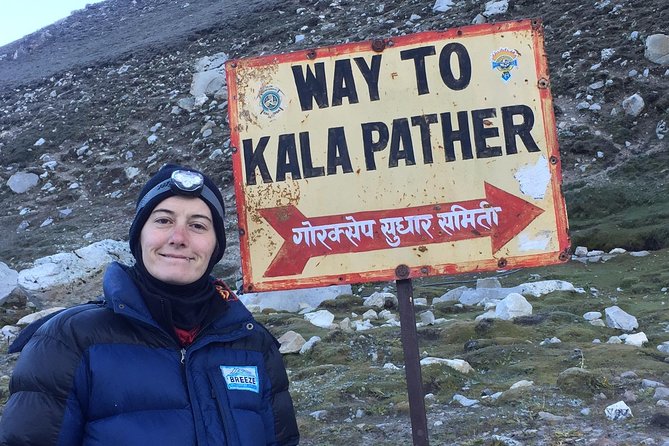
Amidst the vibrant Sherpa culture, trekkers are treated to some of the most breathtaking scenic views in the world. The journey unfolds with stunning panoramas of towering peaks like Everest, Lhotse, and Makalu, captivating every adventurer.
As they trek through lush valleys and rugged terrain, trekkers encounter picturesque villages, terraced fields, and ancient monasteries that enhance the experience. Notably, the view from Kala Patthar at sunrise is a highlight, offering an unforgettable sight of Everest bathed in golden light.
Along the trail, the vibrant flora and fauna add a unique charm, making every step a visual delight. Each moment spent surrounded by these majestic landscapes and cultural gems creates lasting memories for trekkers eager for adventure.
Customer Reviews
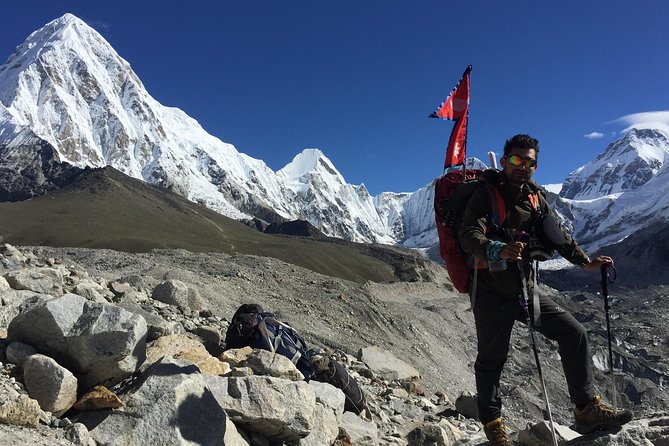
Trekkers rave about their experiences on the Everest Base Camp Trek, highlighting not just the stunning scenery but also the exceptional support from the guides.
Many reviewers commend the Breeze Adventure team, particularly Kishwor, for their professionalism and knowledge.
Key takeaways from customer feedback include:
- Breathtaking views from Namche Bazaar and Tengboche Monastery
- Well-organized itinerary that balances challenge and enjoyment
- Supportive and knowledgeable guides who enhance the experience
- A sense of camaraderie among trekkers that makes the journey memorable
With an overall rating of 5.0/5 based on five reviews, this trek comes highly recommended for adventure seekers looking for an unforgettable journey in Nepal.
Preparing for the Trek
After experiencing the breathtaking views and camaraderie that the Everest Base Camp Trek offers, preparation becomes vital for ensuring a smooth and enjoyable adventure.
Trekking enthusiasts should start by assessing their physical fitness, as a moderate level is essential for this journey. Investing in quality gear, including a warm sleeping bag and layered clothing, can make a significant difference in comfort.
Travelers should also familiarize themselves with altitude sickness symptoms and stay hydrated throughout the trek. It’s wise to pack light yet bring essentials like snacks and a basic first aid kit.
Lastly, connecting with experienced guides can provide invaluable insights, enhancing both safety and enjoyment on this unforgettable expedition.
Frequently Asked Questions
What Is the Best Time to Undertake the Trek?
The best time for trekking is usually during spring (March to May) and autumn (September to November). These seasons offer clear skies, moderate temperatures, and stunning views, making them ideal for adventurers seeking unforgettable experiences.
Are There Age Restrictions for Participants?
There aren’t strict age restrictions for participants, but it’s crucial to consider individual fitness levels. Younger trekkers, with proper guidance, often thrive, while older adventurers should ensure they’re physically prepared for the trek’s challenges.
How Do I Prepare Physically for the Trek?
To prepare physically for the trek, she focuses on cardio, strength training, and endurance exercises. Hiking with a weighted backpack, practicing uphill climbs, and maintaining a balanced diet help her build stamina and confidence.
Can I Hire Extra Porters or Guides During the Trek?
Yes, travelers can hire extra porters or guides during the trek. It’s advisable to arrange this in advance, ensuring support for personal belongings and enhancing the overall trekking experience with knowledgeable assistance along the way.
What Communication Options Are Available During the Trek?
During the trek, travelers can use local SIM cards for mobile communication or rely on Wi-Fi in teahouses. Most opt for satellite phones for emergencies, ensuring they stay connected while exploring Nepal’s stunning landscapes.
The Sum Up
The Short Everest Base Camp Trek offers an unforgettable adventure for those seeking both natural beauty and cultural richness. With its stunning landscapes, vibrant Sherpa villages, and the majestic backdrop of the Himalayas, trekkers leave with memories that last a lifetime. As you prepare for this incredible journey, remember to embrace the experience fully—every step brings you closer to the heart of nature and the warmth of Sherpa hospitality. Get set for the adventure of a lifetime!
More Hiking & Trekking Tours in Kathmandu
More Tour Reviews in Kathmandu
Not for you? Here's more nearby things to do in Kathmandu we have reviewed
- From Lukla: Everest Base Camp (EBC) 10-Day Trek
- Kathmandu : Everest Mountain Flight – with Private Transfers
- Full Day : Kathmandu Sightseeing By Bus Day Trip
- Kathmandu: 7 UNESCO World Heritage Sites Day Tour
- Kathmandu: 8-Day Langtang Valley Trek with Transfers
- Thamel Rickshaw Tour
- Everest View Motorbike Tour- 6 Days
- Kathmandu: Top 4 UNESCO Sites Private/Group Tour with Lunch
- From Oceans to Mountains-9 Days (Nepal Guided Tour)
- From Kathmandu: Everest Base Camp Helicopter Tour landings
- Kathmandu: Food and Drink Walking Tour
- Life and spirituality tour of Kathmandu
